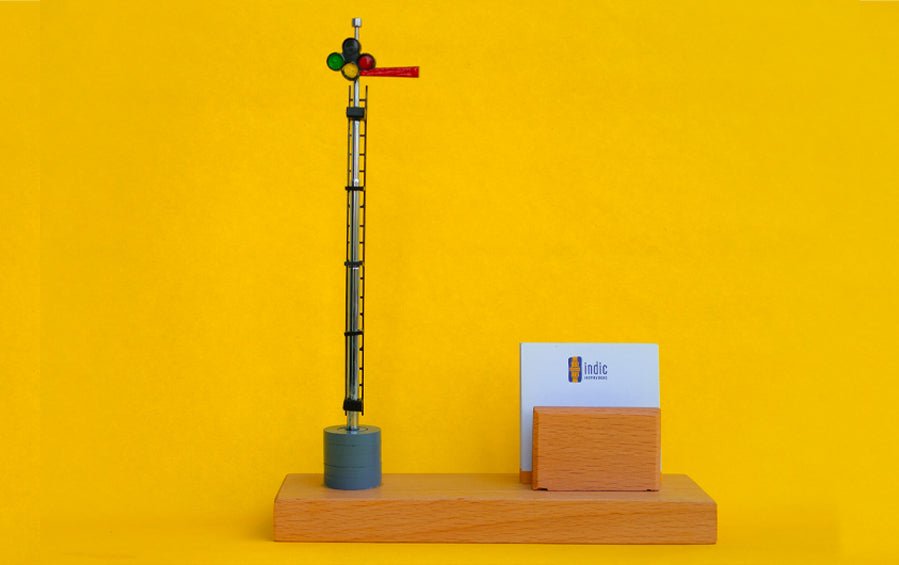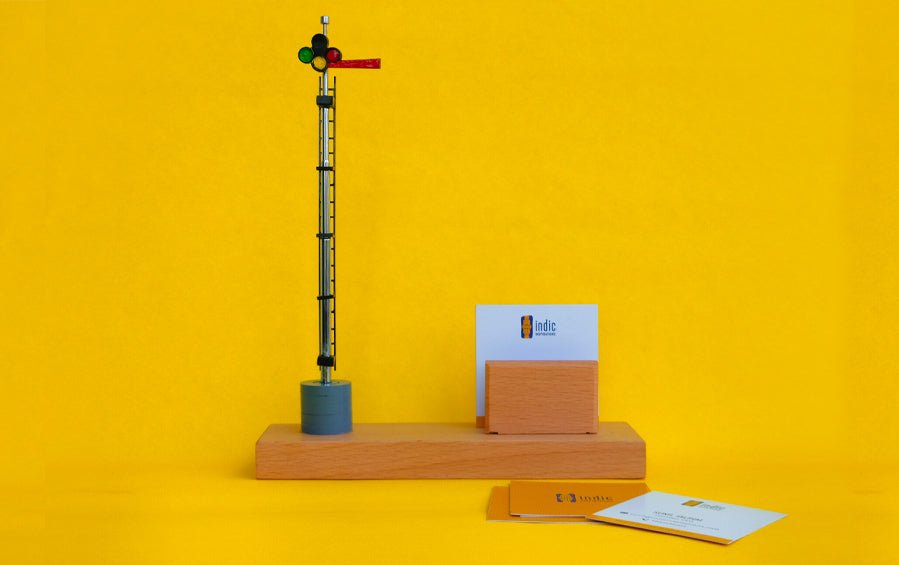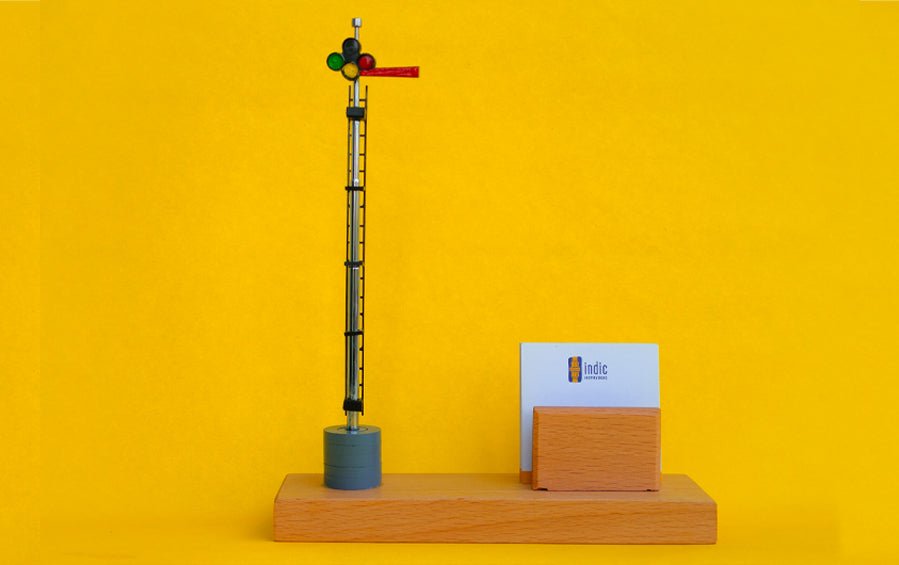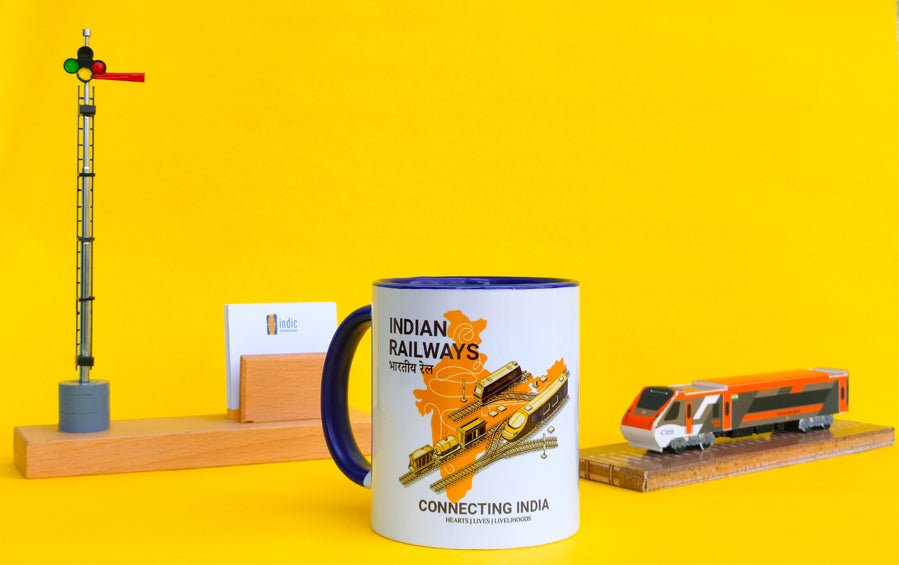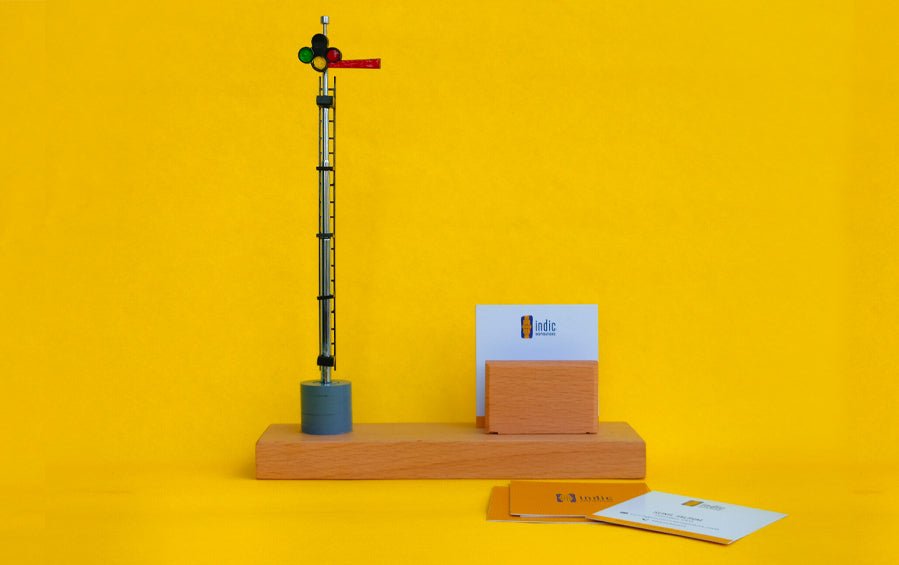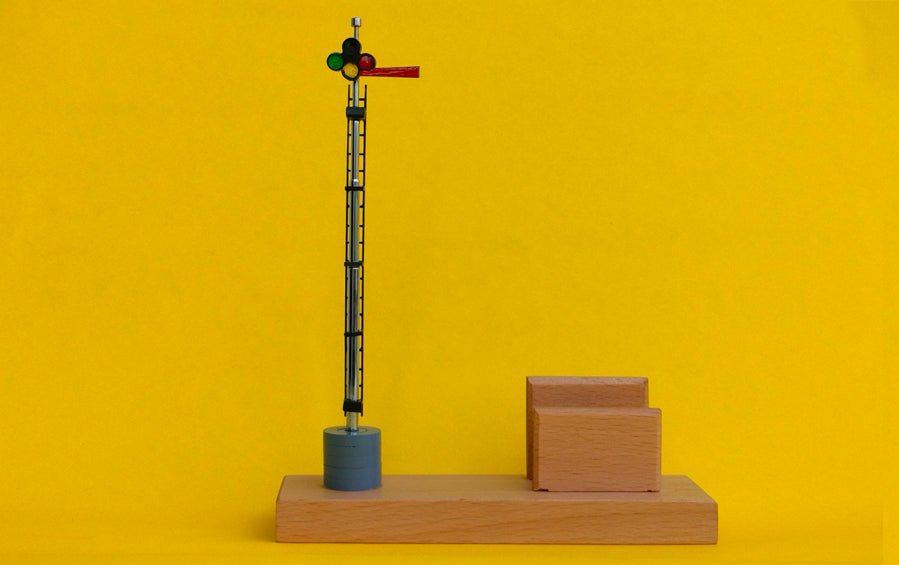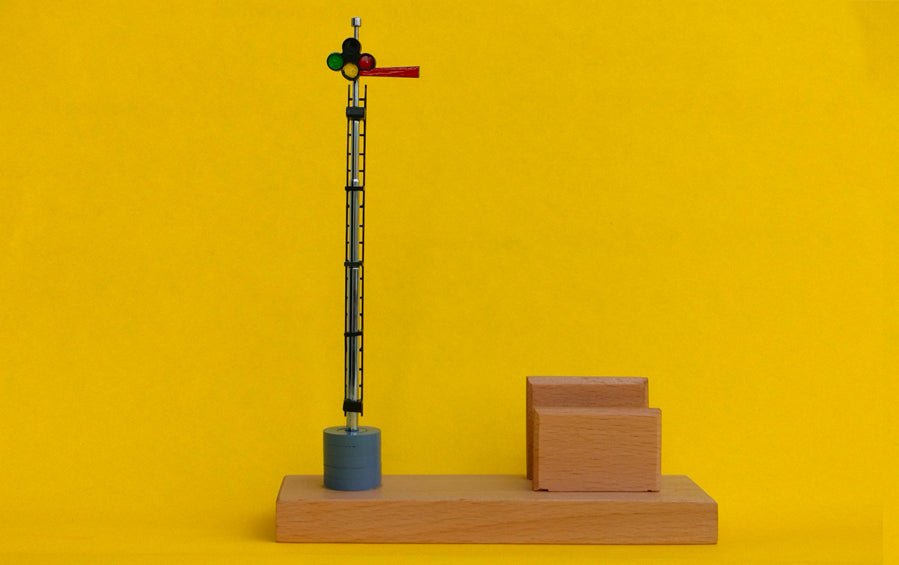Semaphore Signal | Biz Card Holder
Semaphore signals were once widely used in Indian Railways as a means of communication between railway personnel and train operators. They were a critical part of the signaling system, helping control train movements and ensure safety on the tracks.
Semaphore signals are visual signals that use a system of moveable arms or blades to indicate different aspects or indications to train drivers. These signals were operated manually by signalmen at railway stations and junctions.
Semaphore signals played a crucial role in the safe and efficient operation of the Indian Railways for many decades. They were part of the heritage and history of the Indian railway system.
In recent years, Indian Railways has been modernizing its signaling systems. Traditional semaphore signals have been gradually replaced with more advanced systems like color-light signals and electronic interlocking systems.
About Indian Railways
Indian Railways is one of the largest railway networks in the world and plays a crucial role in transportation within India. Indian Railways has an extensive network that covers almost every part of India. It is divided into zones, each of which is further divided into divisions. These divisions manage the operations and maintenance of railways in their respective areas. The Indian railway system has a rich history, dating back to the British colonial period. The first passenger train in India ran from Mumbai to Thane in 1853. Some of the most scenic train routes in the world are in India. The railways offer luxury and heritage train services, attracting tourists from around the world. India has been developing high-speed rail corridors, with the Mumbai-Ahmedabad High-Speed Rail project being one of the most prominent. These projects aim to provide faster and more efficient travel options.
